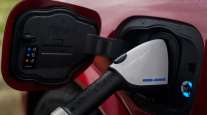TMC’s Summer Conference Places Priority on Education

[Find the latest in equipment & maintenance: Explore this quarter's issue of Calibrate]
Whether because of an interest in sustainability or just anticipated regulatory compliance, interest in vehicle electrification is high among fleet managers. However, concerns over total cost of ownership, infrastructure installation, operational range and charging times remain. Utility power providers are generally confident in their ability to meet the challenge of providing sufficient power and grid resiliency, but they caution fleets to set reasonable expectations as they seek to work together to standardize the electrification process.
Fleets, manufacturers and electric utility providers had a spirited discussion on fleet electrification during American Trucking Associations’ Technology & Maintenance Council 2023 Summer Conference & Fleet/Utility Forum in Washington on June 20-21. The conference was co-organized by TMC and the Electric Power Research Institute.
Both organizations’ members expressed a need for targeted, focused education on the challenges surrounding power generation transmission, distribution and system cybersecurity associated with onboarding electric vehicles. During the conference, TMC and EPRI presented sessions on electric vehicle specification, performance and rollout plans, as well as fleet user deployment strategy and status updates, with a particular focus on fleet experiences with performance, infrastructure and operational challenges.
The two-day event also featured sessions covering the electrification planning process based on utility capabilities and capacities, as well as presented case studies from the fleet-utility perspectives.
The conference addressed important cybersecurity concerns with electric vehicle operation, discussed emerging standards, reviewed policy and regulatory issues and presented the latest information on EPRI’s new EVs2Scale2030 Initiative.

Braswell
The first day focused on presented manufacturer, fleet and utility provider perspectives on various challenges associated with fleet electrification. Keith Brandis, vice president of partnerships and strategic solutions for Volvo, said his company has learned that customers should take a holistic, ecosystem approach to electrification of transportation at individual sites. Additionally, he said, fleets should plan for unexpected delays due to supply chain constraints, construction permitting issues, crew scheduling, etc., when it comes to infrastructure installation for electric vehicles.
Matt Srnec, principal engineer electrical for Thermo King Americas, said fleets should work within the existing SAE J3068 standard to create a subsection standard that fits trailer refrigeration unit and lower power applications, and create detailed specifications for industry and explore adjacent applications, such as ground support and construction. Working with industry groups such as TMC and EPRI is also of substantial benefit, he said.

More Q3 Calibrate
►Fleets Tackle Parts Shop Organization
►Freeze: Step Up Push to Bring Veterans Into Trucking
►Trucking Industry Works to Make Electric CVs More Affordable
►Baxter: Natural Gas Engines Could Reduce Fuel, Maintenance
►TMC Corner: Summer Conference Places Priority on Education
Explore the Issue!
Jeff Short, vice president of American Transportation Research Institute, said the challenge surrounding fleet electrification is substantial, based on recent ATRI research. Electric vehicle production is dependent on mining and refining of key raw materials such as cobalt, graphite, lithium and nickel, with the transportation sector requiring a staggering amount of these materials to satisfy battery demand. Parking spaces for chargers also are a significant barrier, with a minimum of 313,000 spaces needed to ensure sufficient charging locations for the anticipated number of electric vehicles in the coming decade. ATRI’s parking case study found that the effort requires enough daily electricity to power more than 5,000 U.S. households for 126 truck-charging events, he said.
Fleet concerns centered on total cost of ownership, return on investment strategy/planning, charging infrastructure, energy management, data analytics and various operational factors. Ken Marko, fleet sustainability senior manager for US Foods Inc., said regulations and corporate sustainability goals are driving change in his operation. He recommended that fleets begin infrastructure projects early and expect them to take longer than expected. There are many equipment solutions with various levels of maturity and infrastructure readiness, and there are big financial and business implications. An entire electric truck ecosystem collaboration is essential for an effective transformation, he said.
Arun Chickmenahalli, director of maintenance R&D for Ryder System Inc., said his company with 260,000 vehicles has been at the forefront of working with manufacturers and infrastructure providers to bring about an effective electrification solution. He noted his operation will continue to track electric vehicle and electric vehicle support equipment performance and provide feedback to suppliers for enhancing the technology development.
Utility providers presented viewpoints of large public utilities and municipally owned utilities as well as electric cooperatives. Common to all the panelists, moderated by EPRI consultant Mike Rowand, was the need for fleet customers to clearly present their needs and planning process for deployment of electric vehicles so that their utility provider can adapt the power grid for the fleet service needed. It’s worth noting that since deregulation, utilities themselves generally are not producers of electricity. Rather, they are the delivery conduit for electricity to the customer via wires, transformers and switching gear, much as a logistics company delivers goods and services to customers.
Want more news? Listen to today's daily briefing above or go here for more info
David Owen, manager-electrification, CenterPoint Energy Resource Corp., said capital utilization drives the planning process. In general, capacity is not an issue provided that the ROI case can be made to recover the investment needed in grid modifications as the energy itself is procured on the deregulated open market. Certainty in the projection of energy needs is critical to aligning a fleet’s needs with the infrastructure expansions that a utility may need to do.
John Nelson, senior project manager for transportation electrification for Southern California Edison, provided insight into the project being worked on by his company for US Foods in Southern California. While reporting that the utility was able to meet the needs of the initial fleet electrifications, the project was longer in implementation that originally anticipated, Nelson said that multiple projects coming online in a single area likely would require significant upgrades in equipment. Fleets should anticipate at minimum a two-year window from initial planning to delivery of electric vehicles and supporting equipment.
Jeff Haase, director of member services, DER & End User Strategy, for Great River Energy, said electric cooperatives make up the majority of utility providers. These companies vary greatly in size and capacities and must seek approvals from their state utility commissions to change their rate structures to accommodate large expansions. Regardless of the size of the utility, the key factor in being able to provide the level of service needed by the fleet depends upon the total demand on switching equipment. For small local switches and breakers, 18 months is a reasonable minimum. For medium-size distribution equipment, three years, and with a substation upgrade, the equipment procurement may take as long as five years due to supply chain issues.
EPRI’s EVs2Scale2030 initiative is designed to standardize the fleet electrification process for equipment users and utility providers. EVs2Scale2030 is a three-year commitment focused on leveraging industry scale to galvanize and align critical market stakeholders as EV goals increasingly target 50% EV market share by 2030. EPRI will leverage its industry partnerships to mobilize utilities, OEMs, fleet operators and charging providers, and coordinate with federal agencies and labs to support the rapid deployment of millions of electric vehicles — while minimizing grid impacts and enabling critical grid benefits, said EPRI Director of Transportation Britta Gross.
Cyber and grid security also is an important consideration. Industry groups are working to ensure strong defenses against malicious actors who wish to disable or compromise grid infrastructure or vehicle operation, either for monetary gain, terrorism war, or espionage. Working with law enforcement and industry associations in advance of an attack will help reduce exposure and/or damage should an incident occur, said FBI Supervisory Special Agent David Smith.




